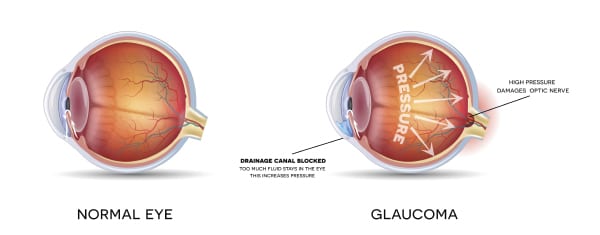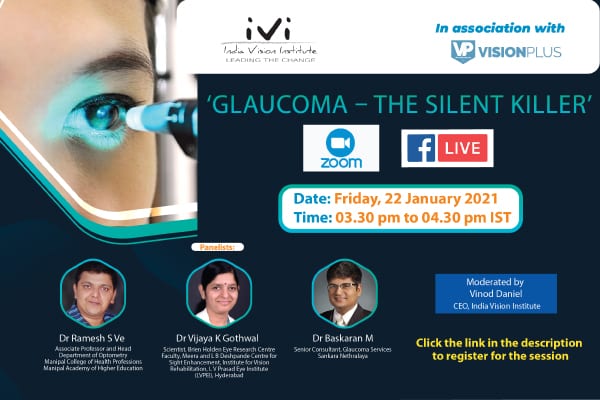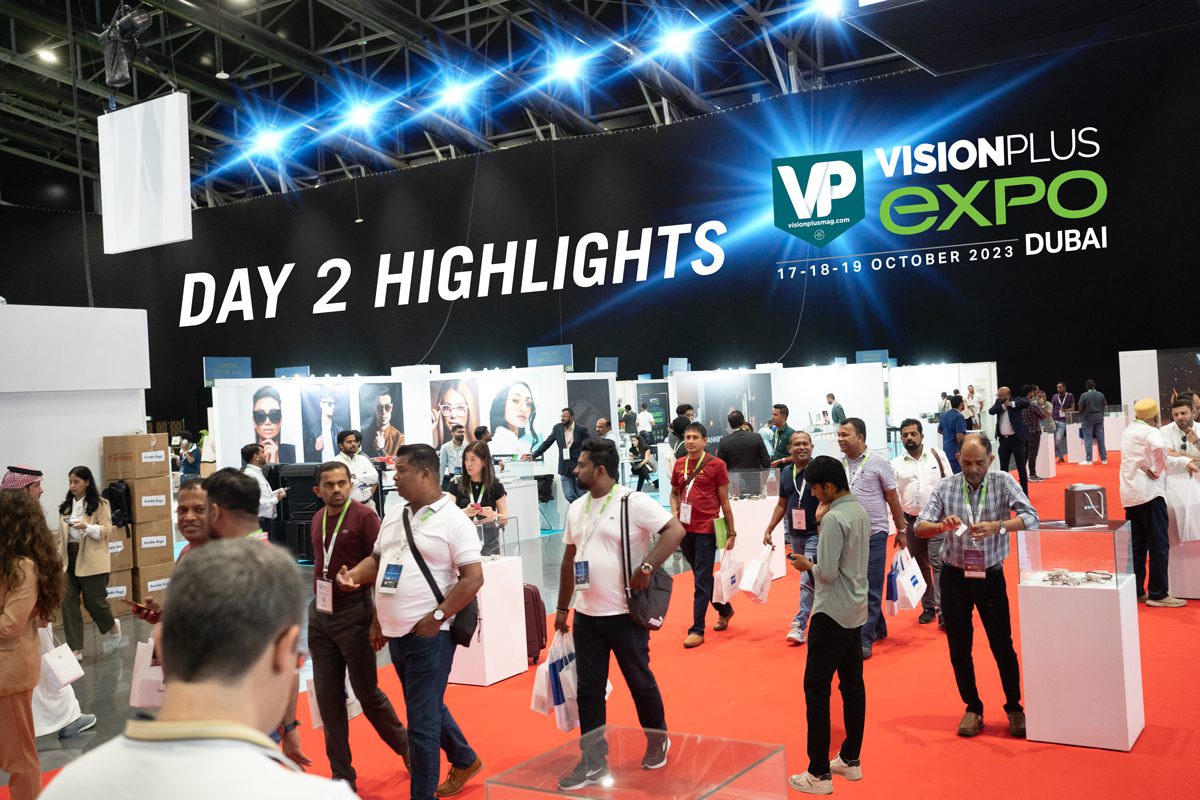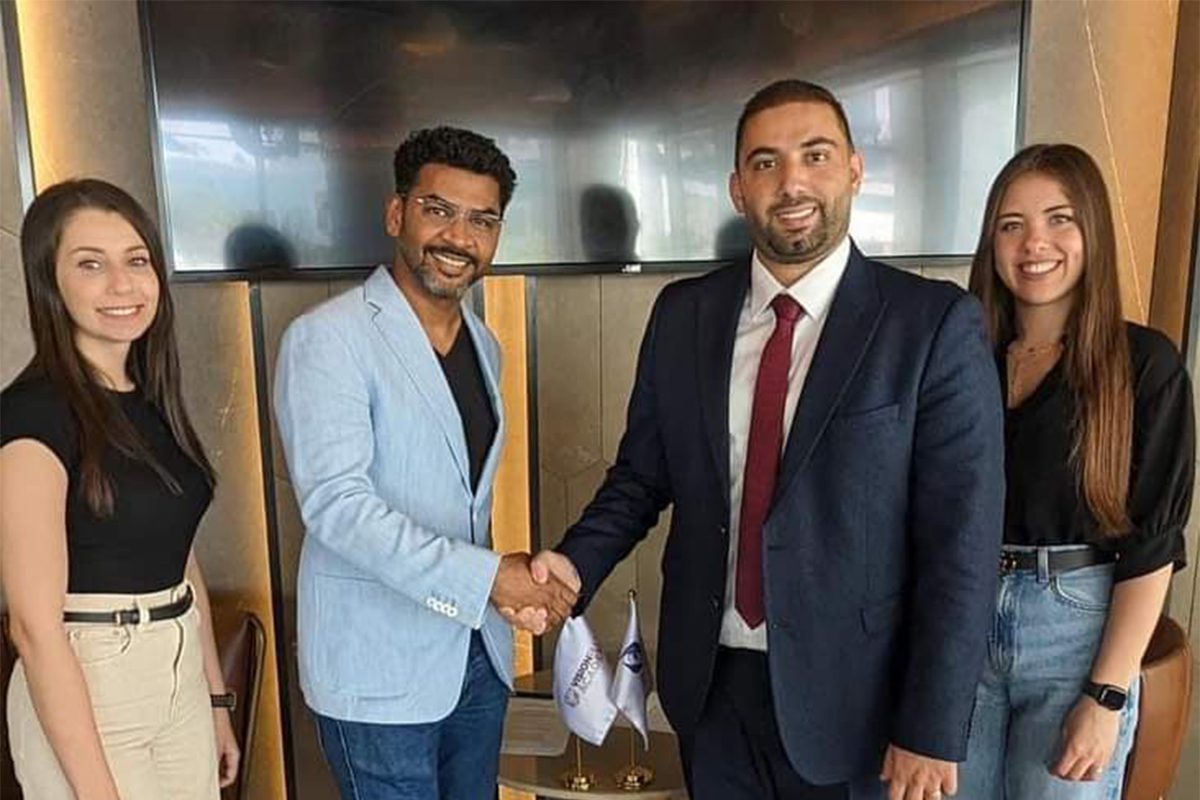At the India Vision Institute – VisionPlus Magazine hosted ‘Glaucoma – The Silent Killer’ panel discussion on January 22nd, 2021, panellists shed light on the proverbial darkness that shrouds this silent pallbearer of gloom and exchanged ideas on best practices and public health strategies to combat Glaucoma.
Moderated by IVI’s CEO, Vinod Daniel, the panel at the discussion comprised Dr Mani Baskaran, Senior Consultant, Glaucoma Services, Sankara Nethralaya, Dr Ramesh S Ve, Associate Professor and Head Department of Optometry Manipal College of Health Professions, Manipal Academy of Higher Education, and Dr Vijaya K Gothwal, Scientist, Brien Holden Eye Research Centre & Faculty, Meera and LB Deshpande Centre for Sight Enhancement, Institute for Vision Rehabilitation, L V Prasad Eye Institute (LVPEI), Hyderabad.
Discussion
Often called the “silent thief of sight,” Glaucoma slowly damages the eyes and can cause irreparable harm even before there is any vision loss. The disease is a “silent killer” in more ways than one. The damage caused by glaucoma can’t be reversed, but treatment and regular checkups can help slow or prevent vision loss, especially if you catch the disease in its early stages. It is estimated that millions of people in India and around the world have some form of Glaucoma. Taking comprehensive eye examinations to more people and adequately skilling primary eye care professionals in all parts of the country, especially in remote areas, to detect Glaucoma will help to mitigate many of the threats this disease poses to public health.
Glaucoma often goes undetected because of a lack of awareness among patients. “Catch them early, because early detection can help delay blindness,” said Dr Mani Baskaran, in response to Mr Daniel’s question on the need for timely identification and diagnosis of Glaucoma patients. “In India, a large number of Glaucoma patients are not aware of their condition. Eye care professionals should work towards making the public aware. A higher level of awareness in society will make more people come forward and have their eyes examined for this condition,” Dr Baskaran added. If you are above the age of 40, it is highly recommended that you get an intraocular pressure check done, at the very least. Gonioscopy and visual field tests can also help in detection, according to Dr Gothwal.


People whose families have a history of Glaucoma and children who have undergone congenital cataract surgery should also have their intraocular pressure examined regularly. Children with Primary Congenital Glaucoma display symptoms such as corneal clouding and ocular enlargement, which can be detected early.
Access to screening facilities and tests required for the early detection of Glaucoma in remote areas is an issue to which Vinod Daniel drew attention. “Where can someone living in a remote part of the country go to get his or her eyes checked for Glaucoma? Do eye care professionals in remote regions have the facilities and requisite skill sets to diagnose Glaucoma?”, Mr Daniel asked. “It is important for undergraduate programs to impart knowledge essential to developing basic skill sets such as carrying out intraocular pressure tests and following best practices,” noted Dr Ramesh S Ve. While progress has been made on the education and skill-development front, many eye care professionals in remote areas still lack skills such as clinical decision-making with imaging techniques and developing co-management strategies for patients. Despite creditable efforts and investment by private educational institutions in skill development and capacity-building, there is considerable room for more government spending in eye care education and service delivery because of the persisting disparities between India’s different regions and the urban-rural divide.
There is a large gap between the quality of facilities available in the big cities and rural areas and small towns. However, technology can help bridge the gap. According to Dr Ramesh S Ve, the last two decades have seen many Indian startups develop affordable retinal imaging systems. These systems don’t just help detect Glaucoma; they also help diagnose other sight-threatening diseases.
Introducing new imaging techniques in primary eye care facilities in rural areas can reduce the gulf between big cities and remote regions when coupled with tele-eye care services and referrals.
Chronic conditions, such as Glaucoma have long-lasting effects. Glaucoma can hinder a person’s ability to function normally in day-to-day life. Mr Daniel mentioned some of the challenges Glaucoma can bring to a patient’s life when he asked the panellists if it is possible to find ways around them. “Glaucoma can lead to difficulties in reading, walking, driving, and even facial recognition,” Dr Gothwal said. These challenges become especially daunting when both eyes have high visual field loss.
Glaucoma patients facing vision loss are often homebound. The disease’s impact on contrast sensitivity makes it difficult for people living with it to walk in poorly lit corridors and descend stairs. Their ability to move and socialise is restricted, leading to mental health issues such as anxiety and depression. The disease has severe adverse effects on the quality of life and patients often find it difficult to cope with serious vision loss.
Technology has changed the way co-management strategies and low vision rehabilitation are provided. Orientation and mobility training helps patients cope with Glaucoma-induced impairment. Speech output systems such as computer screen reader programs can, for example, help visually impaired users to read computer screens either with a text-to-speech output or by a refreshable Braille display. This can help people deal with vision loss and make them competitive in the job market.
While the obstacles Glaucoma places may seem imposing, they are not insurmountable. High levels of awareness, regular vision screenings for the right demographic group, and the smart use of modern technology and quality service delivery will make our response to this silent killer more effective.
The total views so far from the discussion on FB live is 1,600.











